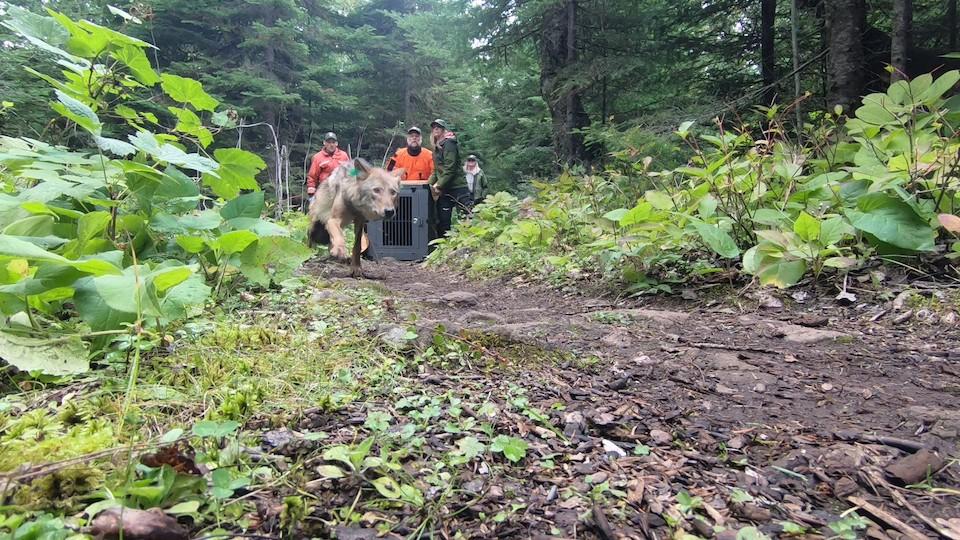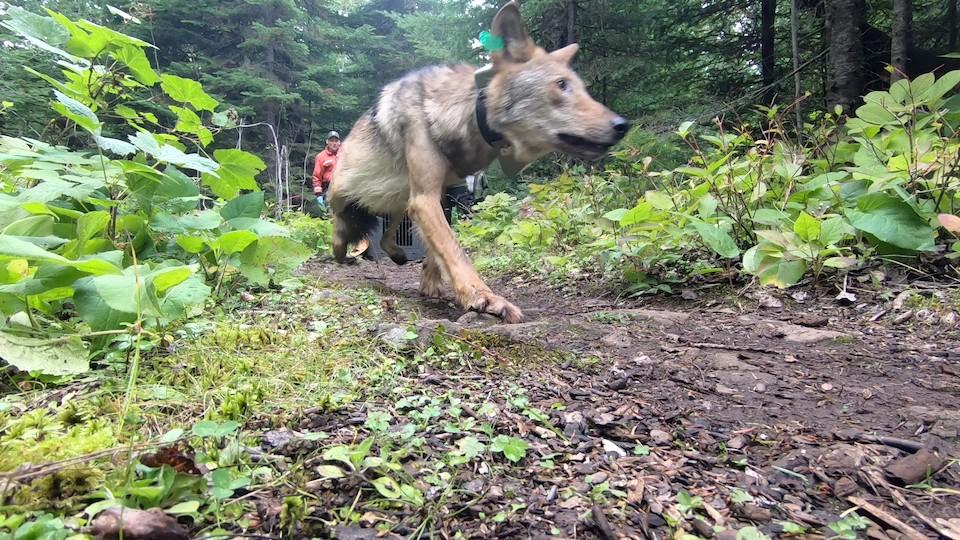
Four wolves were released at Isle Royale National Park in September/NPS, Phyllis Green
Four wolves were moved to Isle Royale National Park in September to bolster the island's predator population, but one died shortly thereafter.
The wolves were moved to the park on September 13 from Michigan’s Upper Peninsula. One of the wolve's collars issued a mortality signal last weekend, and biologists located the animal's carcass on Tuesday. The body was to be sent to the USGS National Wildlife Health Center in Madison, Wisconsin, for necropsy.
The surviving wolves included two males and a female. They bolstered the island wolf population to 17, which now includes nine males and eight females.
“Capture, anesthesia, and translocation are stressful events for wolves and the impact of that stress on each individual wolf is unknown,” Isle Royale Park Superintendent Phyllis Green said of the dead wolf. “There is a field examination, however, underlying health conditions of wolves prior to their capture are difficult to determine. The analysis of the samples collected during the examination and the necropsy may reveal more information about the cause of death, which will inform future transfers.”
The National Park Service worked closely with the Michigan Department of Natural Resources, U.S. Department of Agriculture APHIS – Wildlife Services (APHIS – Wildlife Services), and the State University of New York-College of Environmental Sciences and Forestry on the project.

Three of the four wolves released at Isle Royale National Park in September survived/NPS, Phyllis Green
From September 5 – 13, seven wolves were captured; three of those not meeting translocation criteria were immediately released. The four adults were examined, documented, tagged, and fitted with tracking collars before being flown to the park on a U.S. Fish and Wildlife Service airplane.
“Adding genetics from Michigan wolves was a key piece of the puzzle to provide the best opportunity for genetic diversity that supports the sustainability of the introduced population. The Michigan DNR, APHIS - Wildlife Services, and SUNY-ESF did an outstanding job, given the weather,” Green said. “Our focus now will be on broad population goals and the opportunity these Michigan wolves represent. We will continue to learn what we can and track how the wolves integrate into the island landscape.”
The three to five year effort to establish 20-30 wolves on Isle Royale is being completed in order to restore predation as a key part of the island ecosystem. Researchers involved in the planning effort recommended this number of wolves from the Great Lakes region. Additionally, they recommended an equal number of males and females in order to establish genetic variability in the new population. The NPS and its partners will monitor the wolf population to determine evidence of social organization, reproduction and predation.



Comments
This is starting to look like quite the boondoggle.
To you, perhaps. Not everyone starts off wearing a "Not A Fan" tshirt.
I support the NPS initiative to relocate wolves to Isle Royale, as not doing so would almost guarantee continued exponential growth of the moose population, overbrowsing and destruction of their habitat, and eventual mass starvation. Those who argue that this intervention is tampering with the natural path of this ecosystem ignore the fact that human actions (such as enabling introduction of canine parvovirus in the island's wolf population) have already altered that path.
I suspect the stress on the trapped and relocated wolves is worse than the NPS experts understand it to be, and I hope they can learn the essential causes of the deaths that have occurred, and find ways to reduce this probability going forward.
That would be a good guess and since the program is continuing I too hope they can learn and eliminate it. I also agree with your prediction of mass starvation BUT, introducing wolves is not the only option. Hunting would be far more cost effective and just as natural, if you agree that man is a part of nature.
This is a waste of tax payers money. This project has been going far too many decades and nothing new of value will be learned. Hopefully wiser people will eventually intervene and stop this waste. Regulated hunting has proven to be a valuable managment tool for wildlife managment. The money raised will help offset the expenses of running the island and keep the moose population in check. Call your representatives and let them know you disgree with this.